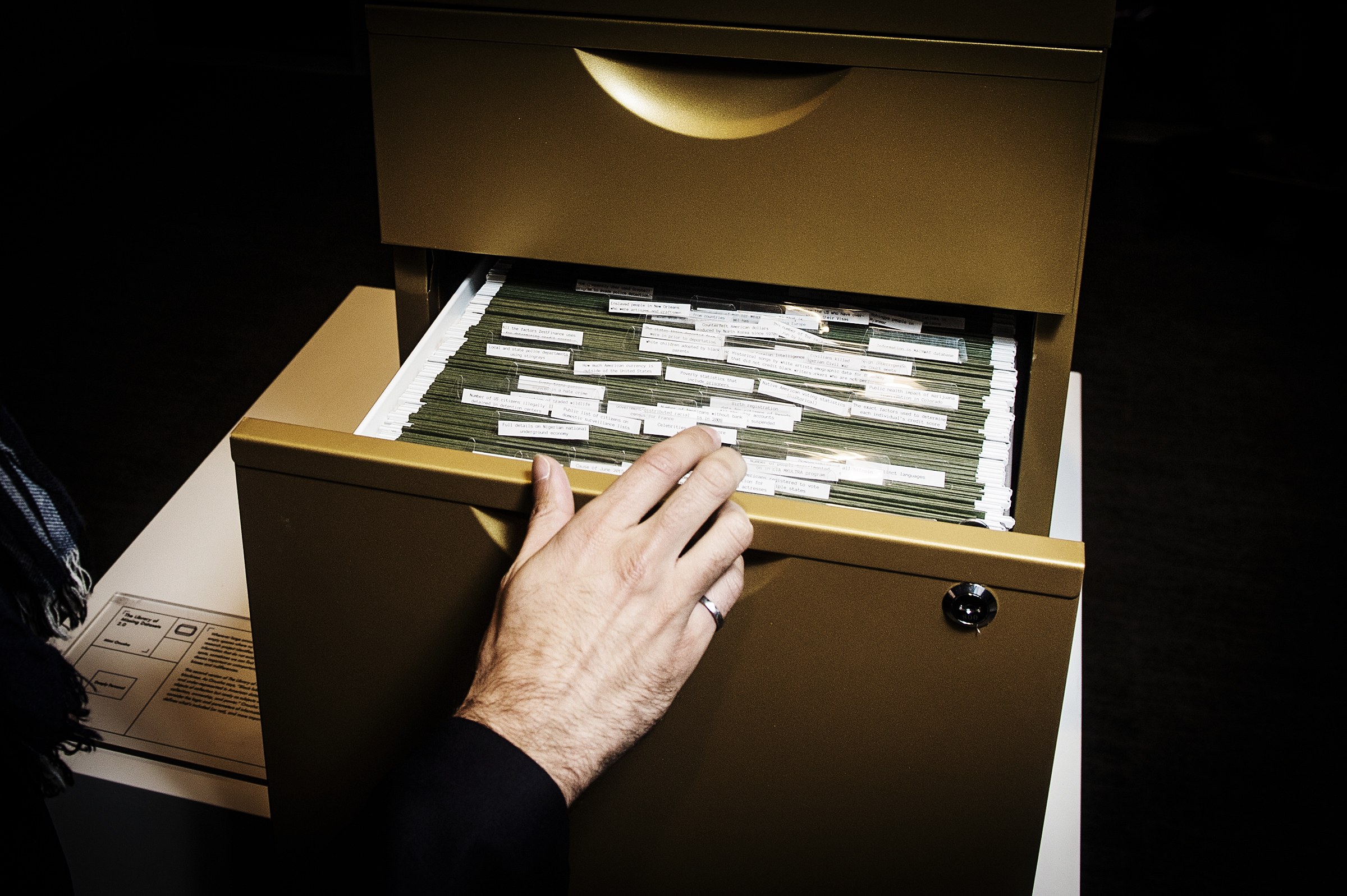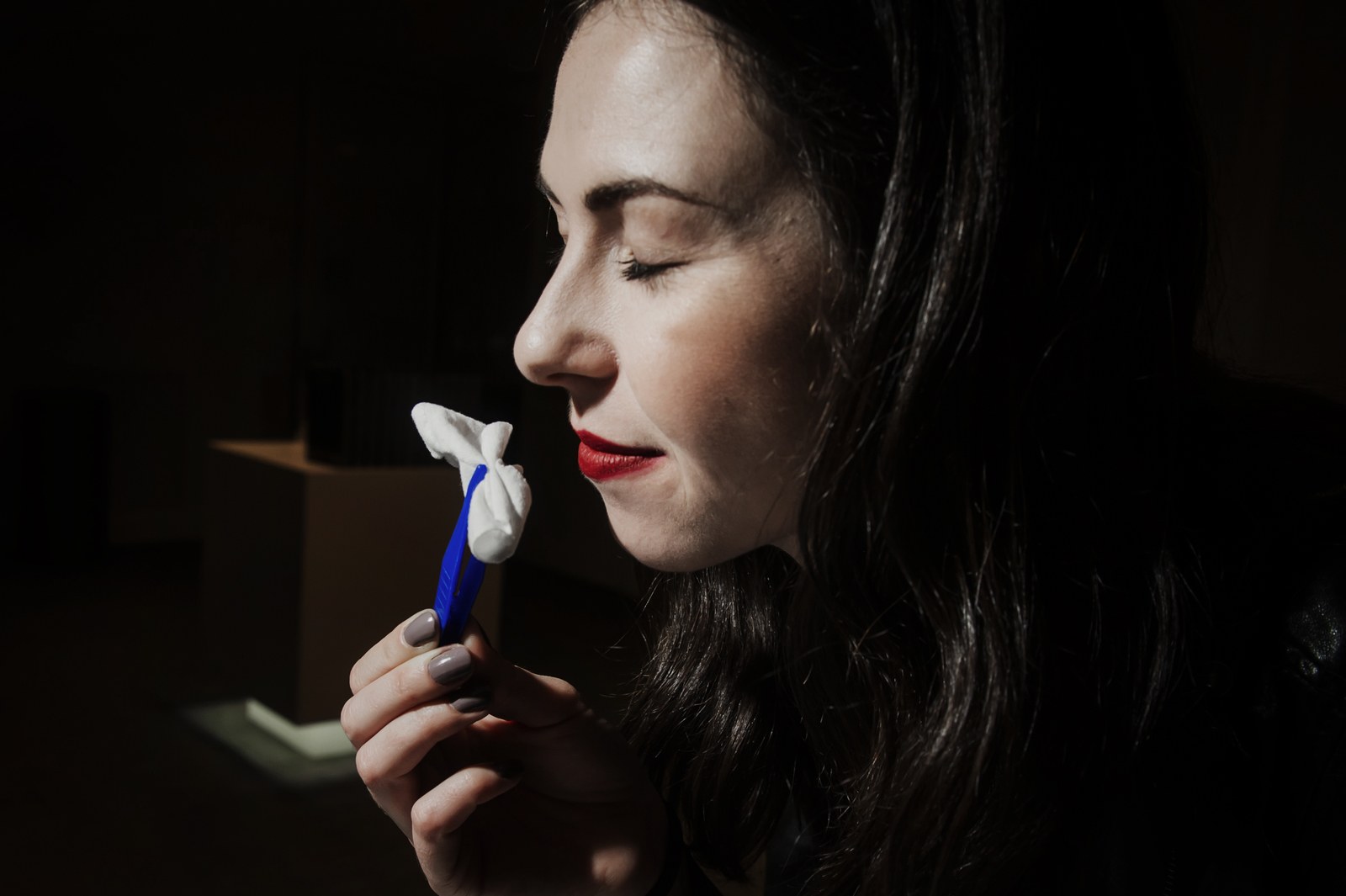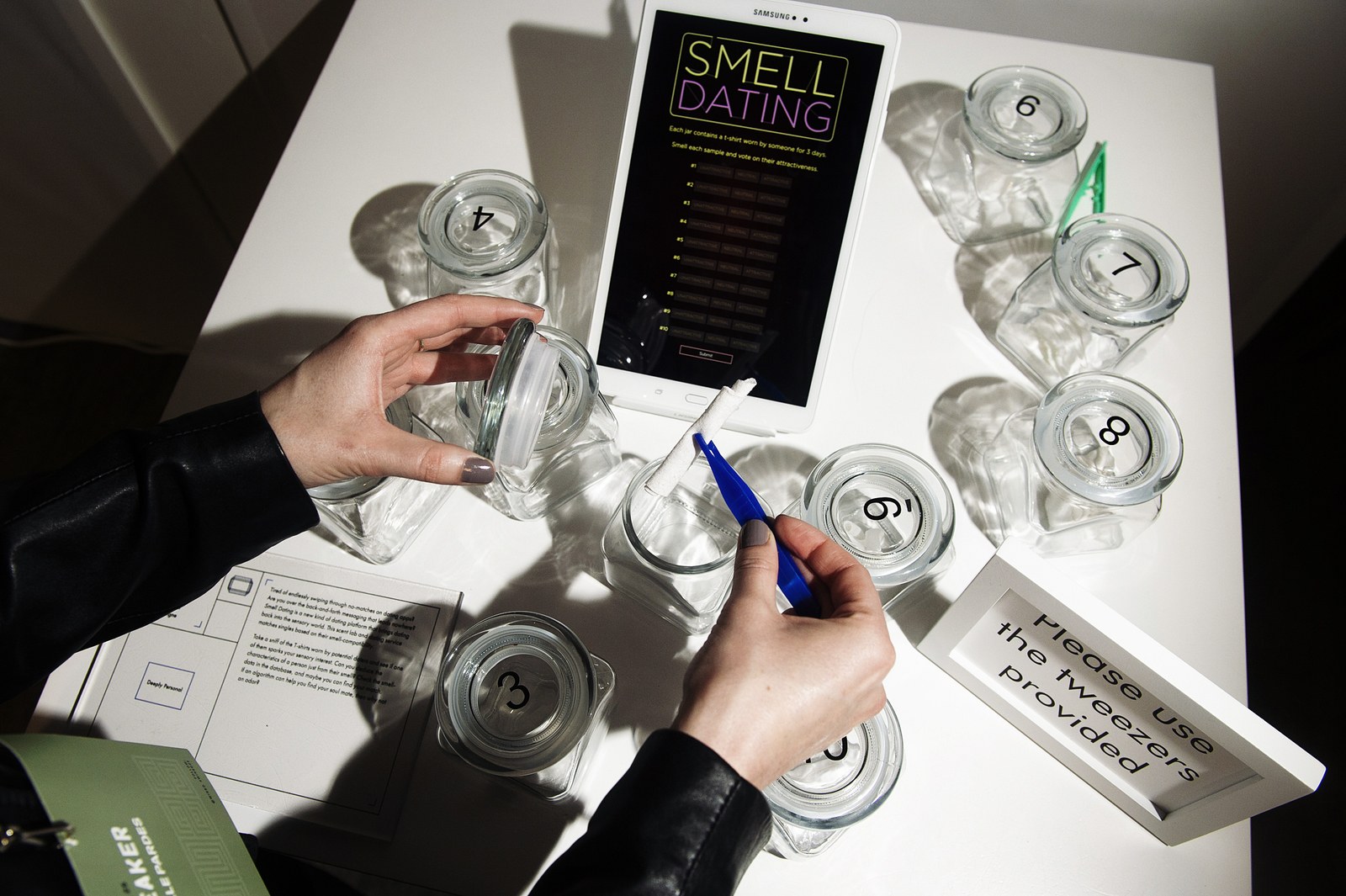Here’s another approach: Take a closer look at that data. How does it represent us well—and what does it leave out? How can we use it to our advantage, and how can it be used against us?
Take Smell Dating installation by Tega Brain and Sam Lavigne. Sniff a few of the jars on display, each of them filled with sweaty T-shirts worn by potential daters. Like the way one smells? Cross-reference the smell-data in a database, and find your match.
Other installations are less playful. Flip through an encyclopedia of restricted websites, where you can find millions of examples of illicit, inappropriate, or illegal web content that have disappeared from the internet. In the Library of Missing Datasets 2.0 by Mimi Onuoha, explore the contradictions in the way data around blackness has been both over-collected and under-represented in databases. Spend some time surveilling a nearby crosswalk, monitored by a traffic webcam, where you can push a button to screencap jaywalkers. It’s art, sure, but the footage also gets sent anonymously to the police. Choose wisely.
Even mundane objects, like a driver’s license, contain hidden secrets. Scan yours at the Clear ID installation by Marc DaCosta to find out what kinds of personal data are stored inside its barcode—information that can be sold to insurance companies, private investigators, or bouncers at clubs.
The installations will be on view as part of the WIRED25 festival on Saturday, November 9. It goes on all day at the Commonwealth Club, and it features book signings, a screening of For All Mankind, live podcast tapings, and more. Kids can also learn how to make the best slime, join science fiction author N. K. Jemisin for a world-building workshop, learn how to fold the best paper airplanes, and watch Adam Savage perform juggling tricks (and explain science, too). Get your tickets here.
This piece has been updated to include the names of the artists.
Source: It’s Time to Rethink Your Data—Including Your Smell Data | WIRED















